Hook and Ladder No. 3
Introduction
Text-to-speech Audio
Images
Front and Ferry St. side of Hook & Ladder No. 3 building in 2012 photo (Cielo 2015)
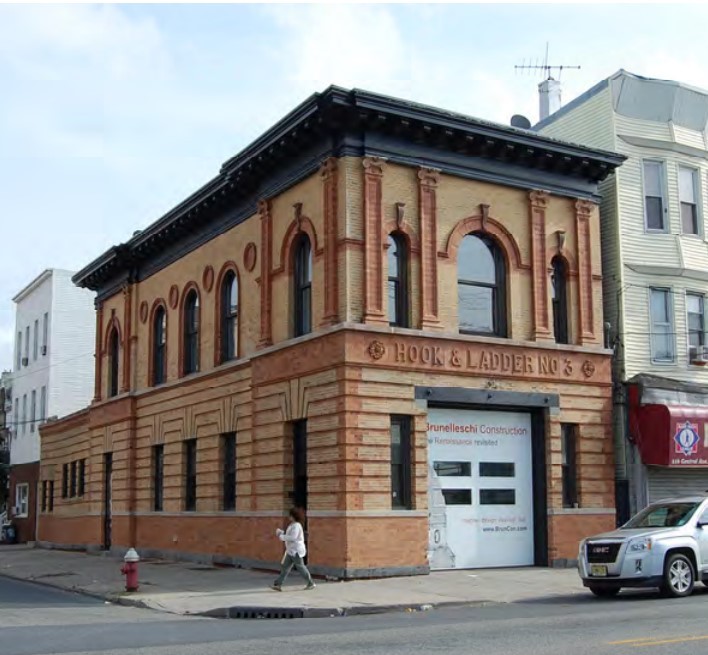
Sketch of "Hudson City's New Firehouse" from December 5th 1896 Evening Journal local newspaper p. 12 (Cielo 2015)
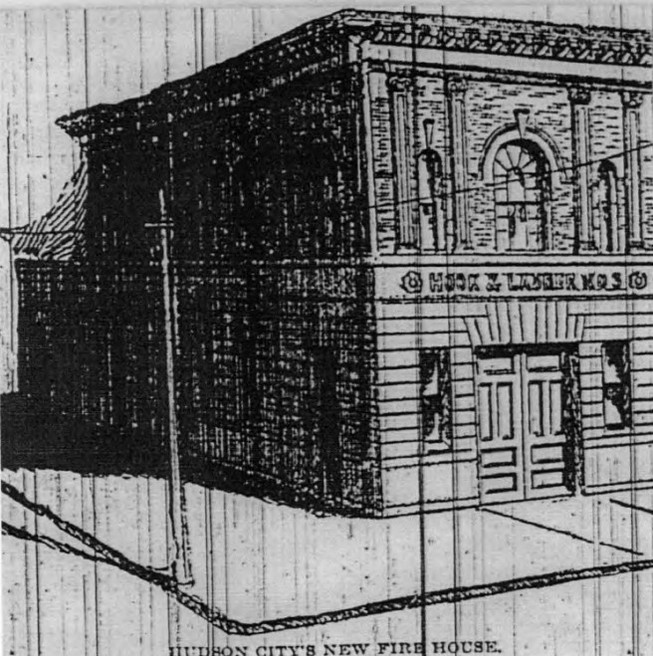
Future location of Hook & Ladder No. 3 (red arrow) on 1873 Hopkins map of Hudson Co. p. 59 (Cielo 2015)
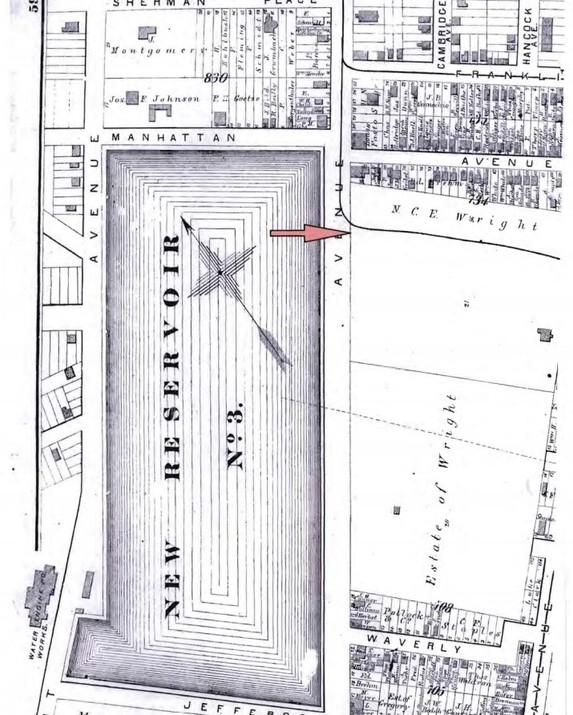
Second story details in 2012 photo (Cielo 2015)
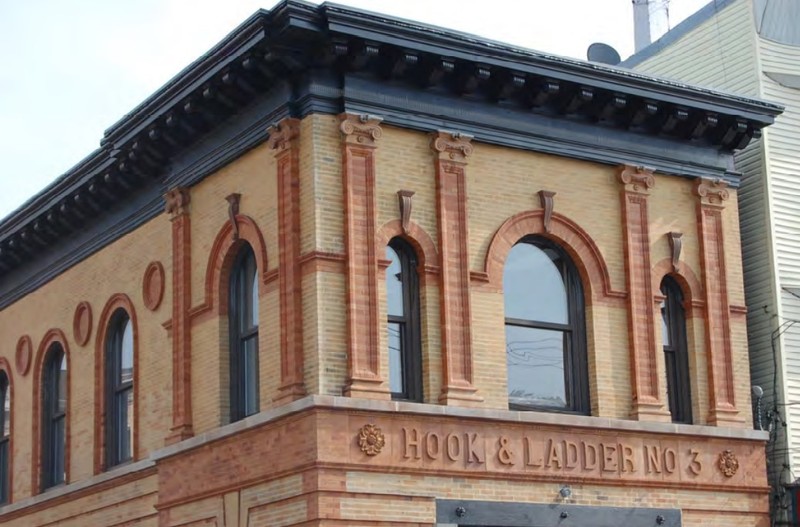
Metal spiral staircase in 2012 photo (Cielo 2015)
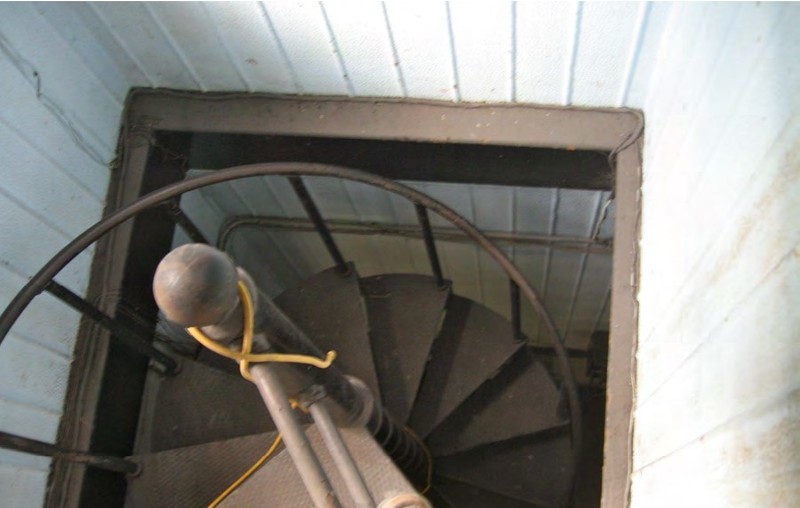
Rediscovered 1896 handwritten message in second floor dormitory, in 2012 photo (Cielo 2015)
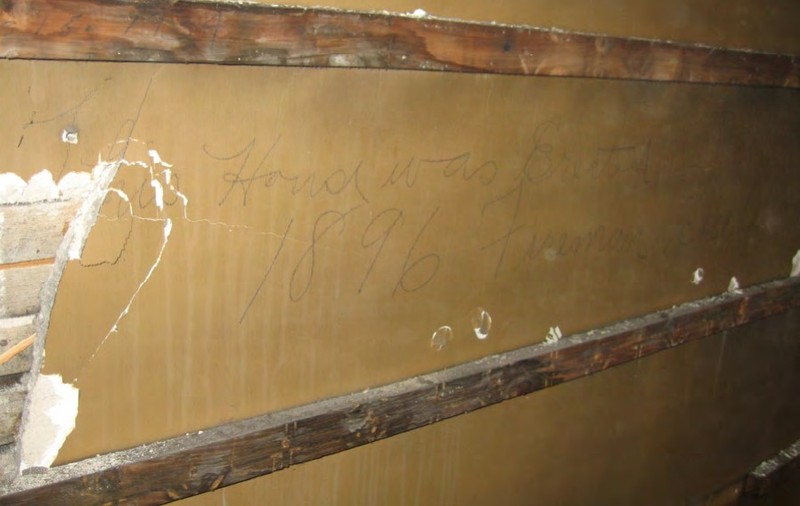
Second floor sitting room, 2012 photo (Cielo 2015)
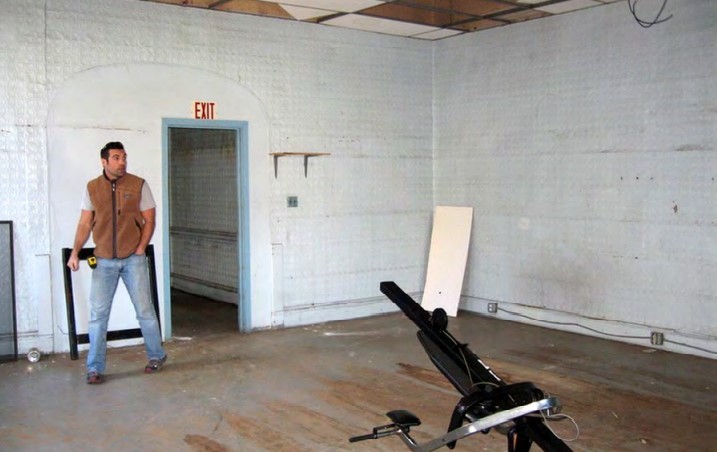
Backstory and Context
Text-to-speech Audio
In the 1860s, Central Avenue was the main street through Hudson City, before it became part of Jersey City. There had been firefighters in Jersey City since 1829, after the public demanded protection after several terrible fires. There was no money in the city treasury for the service and no means of creating a tax, so the city earmarked funds from a new ordinance requiring public auctioneers purchase a license. The city purchased a fire engine from New York City; the new machine cost $800, and 100 feet of hose added nearly another $90. Thirty volunteers formed the first fire company in Jersey City, Liberty Engine Company No. 1; the engine was stored at the stable of the Farmer's Hotel at 42 York Street. The fire departments of Jersey City, Hudson City, and Bergen consolidated in 1870 when all three municipalities became Jersey City. The resulting need was too large for just volunteer firefighting, so the force began paying firefighters in 1871. The paid force was uniformed and required to stay in the fire house. They were aided by a small force of semi-volunteers nicknamed "buffaloes" who did the same work as the paid force but with minimal pay.
Hook and Ladder No. 3 on Central Avenue is situated opposite Pershing Park along a busy commercial corridor. The original architect was Charles H. Detwiller. The structure is heavily decorated with over twenty different kinds of brick on the exterior, in different shapes, colors, and sizes. Two bands of stone add to the detail: one of limestone and one of bluestone at grade. The land and building cost $12,000; this was $4,000 over budget. The building's footprint covers the entire lot, 94 feet along Ferry Street and 25 feet fronting Central Avenue. The front of the building's ground floor formed the truck room, with 14-foot ceilings, beneath a second floor dormitory and sitting room with an ornate fireplace. The rear of the building was originally a 30 by 25-foot, one-story horse stable. The lettering "HOOK & LADDER NO. 3" is on a terra cotta panel across the front facade, over the large vehicle door flanked by narrow windows. The second floor features a large window in the center with an arched terra cotta header and an arch-topped window on each end. Two entrances into the building are on the Ferry Street side, at either end of five bays. The second floor is topped by a prominent metal cornice. The stable entrance on the one-story rear wing has been filled in with window inserts.
Only minor alternations were made in the 1920s to accommodate motorized vehicles, including replacing the wood flooring of the truck room with a concrete slab; the stables were no longer necessary. The vehicle entry door was made taller before 1938. The beaded pine wainscoting was covered with pressed tin. Wooden windows were replaced with aluminum framed windows in the late twentieth century. The building was in use as a fire house until 2005.
Brunelleschi Construction set up their offices in the renovated former Hook and Ladder No. 3 carriage house in 2011. Headed by Alfonso Carrino, the firm specializes in transforming older buildings into modern uses while preserving architectural details. The firm spent ten months carefully transforming the abandoned building, which suffered from roof leaks, mold, and crumbling walls and floors. The masonry walls of the fire house have been preserved, as well as porcelain tiles, beams, rafters, and an iron helix staircase. The metal slide pole from the second to first floor is preserved from the fire station days, but the floor/ceiling surrounding space is covered by metal mesh, for safety reasons and to bring light to the downstairs space. A highlight of the restoration was finding a handwritten message scrawled on brick walls behind pressed tin: "This house was erected 1896 - Fireman Bill O'Connor." The large doorway along Central Avenue now opens for the company's trucks and machinery to pass through. The upstairs have become office space for "BrunCon" (as they are known on social media); with new skylights added to existing skylights and existing windows, they rarely need to turn on lighting during the day in the office space. The firm was featured in a television show filmed for HGTV in 2011.
A rear addition that used to hold the fire company's stables now contains a modern apartment, with high ceilings and hints of the former brick walls. The one bedroom/ one bath unit holds 750 square feet.
Sources
Central Avenue Special Improvement District. Central Avenue Special Improvement District Management Corporation, About CASID. January 1st 2021. Accessed February 17th 2021. http://www.jcheights.com/about.shtml.
Cielo, Carla. NRHP nomination of Hook and Ladder No. 3, Jersey City. National Register. Washington, DC. National Park Service, 2012/ revised 2015.
Gomez, John. Preservation-minded developers set up shop in historic Jersey City firehouse building: Legends & Landmarks, NJ.com. August 1st 2011. Accessed February 17th 2021. https://www.nj.com/jjournal-news/2011/08/legends_landmarks_preservation.html.
NJ Property Records LLC. 218 Central Ave, NJ Property Records. Accessed February 17th 2021. https://njpropertyrecords.com/property/0906_4401_7.
Olszewski, Anthony. History of the Jersey City Fire Department, Hudson County Facts. March 29th 2010. Accessed February 22nd 2021. http://hudsoncountyfacts.com/hudsoncounty/2010/03/29/history-of-the-jersey-city-fire-department/comment-page-1/.
Zillow. 218 Central Ave #1, Jersey City, NJ, Zillow, Home Details. January 1st 2021. Accessed February 17th 2021. https://www.zillow.com/homedetails/218-Central-Ave-1-Jersey-City-NJ-07307/2081740648_zpid/.
https://npgallery.nps.gov/GetAsset/b33bb546-c1af-4540-8963-59e4a0c9213d
https://npgallery.nps.gov/GetAsset/b33bb546-c1af-4540-8963-59e4a0c9213d
https://npgallery.nps.gov/GetAsset/b33bb546-c1af-4540-8963-59e4a0c9213d
https://npgallery.nps.gov/GetAsset/b33bb546-c1af-4540-8963-59e4a0c9213d
https://npgallery.nps.gov/GetAsset/b33bb546-c1af-4540-8963-59e4a0c9213d
https://npgallery.nps.gov/GetAsset/b33bb546-c1af-4540-8963-59e4a0c9213d
